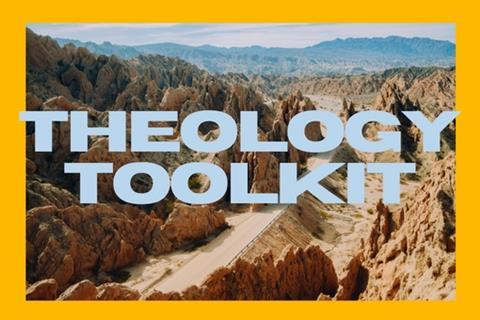
Easter trails behind Christmas in terms of cultural and commercial impact and, I would argue, is even more difficult to fully understand.
What do we do with Easter, with its complicated story of death and resurrection, its theological themes of suffering and sacrifice, atonement and victory, as well as its human stories of betrayal, forgiveness and love? All tricky stuff.
Within our own ministry, how do we talk about it in a meaningful way to children? How do we help them understand that the long weekend of
Easter, to which the Gospel writers give so much space, is vital to our Christian understanding, faith and discipleship? Don’t we often just hide it behind spring scenes of frolicking lambs, Wordsworthesque swathes of daffodils and a sea of chocolate eggs?
So, here are two approaches to this tricky time which may help us; one cultural, and one biblical.
First, can the cultural signs be helpful to us, even though they can appear commercial and highly saccharine? Lambs don’t really frolic in the Easter story. But they do appear. The sacrificial Christ lamb is butchered, and his blood smeared on the earth. This echoes the original Passover story of the Israelites gaining their freedom from oppression and slavery in Egypt. It speaks of the death of something innocent.
Daffodils don’t appear in the Gospel story, although plants and flowers do pop up across the biblical narrative in relation to withering and fading. The daffodil is a dead bulb we plant in the cold of winter months, and miraculously months later it comes to life, emerging from its soil tomb. It speaks of the new life of something that appeared dead and buried.
Christmas is one thing to embrace and explain, but Easter needs deeper work.
And of course, the eggs are interesting. Some years ago I chatted over a meal with Yousef, an Anglican Christian from Jordan, about his Easter celebrations and what they meant to him. He quietly rose from the table and after some minutes brought me several trays of painted hard-boiled eggs, each with a date on them. Yousef was is in his 60s, and the eggs went all the way back to his first Easter as a child. He had received one from the church every year since. ‘They remind me of new life in Christ,’ he said. ‘They speak to me of the connectedness of my baptism and his life. They tell me that there are always new possibilities and miracles.’ The egg is a strong symbol, not just something to be consumed.
And what about the biblical application? Easter is a complicated story with a week long run in. Jesus arrives into Jerusalem before going through an anointing, a developing plot, the Last Supper with the disciples, betrayal, arrest, trial, denial, mocking, crucifixion, and burial, before we get to the angelic declaration ‘He is not here; he has risen’. Making the connections is often difficult, and it is easy to recite parts of the biblical story over several weeks without allowing the classic ‘Why?’ and ‘What does this mean for me?’ questions to be asked.
Maybe we need to look again at how that Easter story is told, and make it a proper animated or physical journey for children. Could we have a picture building up from the Gospels, not just of what happened, but why this has meaning? In getting to the angelic declaration of that first Easter day, what we are exploring is the very miraculous aliveness of God.
This is fundamental, especially for those young people on the cusp of pre-teen and teen life facing the secular challenge of the irrelevance and death of God. Christmas is one thing to embrace and explain, but Easter needs deeper work. We dramatise the Nativity and everyone wants to be involved. What would it mean to dramatise Easter and take those tougher parts, with pauses for question and reflection?




























